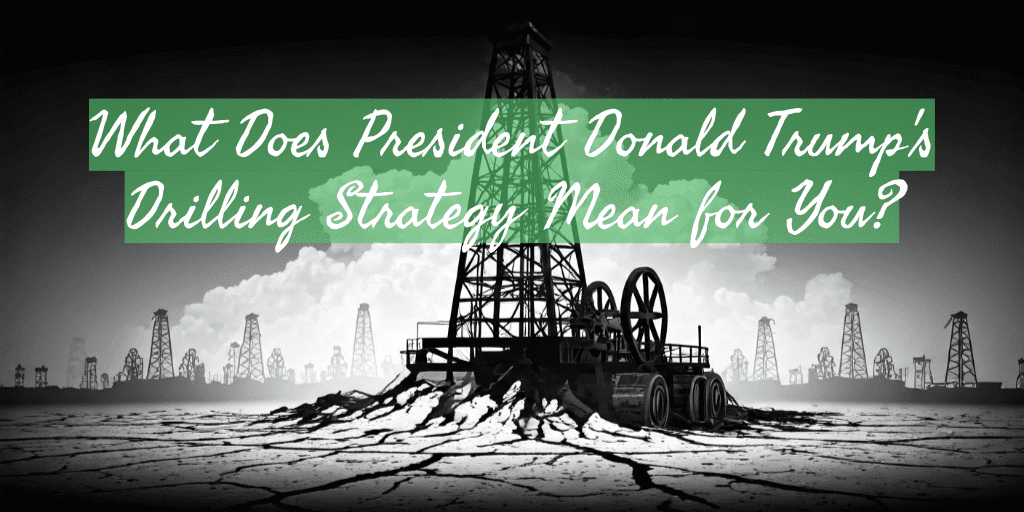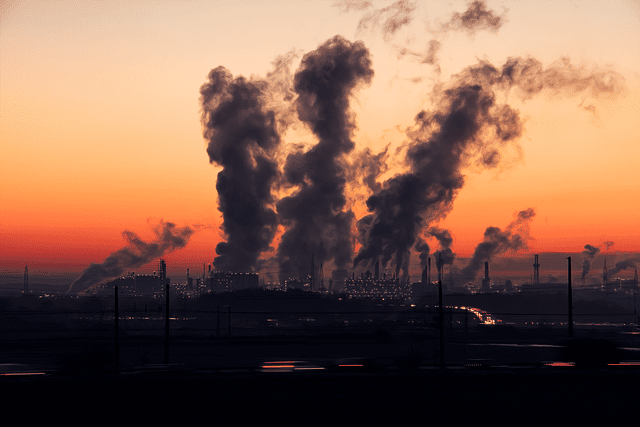
Regarding the future of energy in the United States, one of the key players is President Donald Trump. Since taking office, President Trump has made significant changes to the country’s energy policy, particularly concerning drilling and exploration. But what does this mean for the average American? This blog post will explore the implications of Trump’s drilling strategy and how it could affect you and your everyday life. Whether you’re concerned about the environment, the economy, or both, it’s important to understand the potential impact of these policy changes. Let’s dive in and find out more.
Who is the largest producer of oil today January 20th, 2025?
Since 2018, the United States has proudly maintained its position as the world’s leading producer of crude oil. This accomplishment is no small feat, as it speaks to the country’s impressive production capabilities and strategic investments in the energy sector. In 2023, a significant milestone was reached when the United States achieved a record-breaking average daily production of nearly 13 million barrels of crude oil. This remarkable achievement solidifies the country’s dominance in the global oil market and underscores its trajectory in recent years.
The United States’ journey to becoming the largest producer of crude oil is a testament to its relentless pursuit of energy independence and the efficacy of its innovative technological advancements. Over the years, the country has made substantial investments in modern drilling techniques, such as hydraulic fracturing, also known as fracking. This method has revolutionized the process of extracting oil from previously untapped reserves, making it possible to access vast resources that were once deemed economically unviable.
Moreover, the country’s geographical advantage has played a pivotal role in its ascent to the top of the global oil production charts. The United States has vast natural resources, including shale formations found in Texas and North Dakota. These regions have emerged as major contributors to the country’s crude oil output, with their prolific reserves and favorable geological conditions. Additionally, the United States boasts a well-established infrastructure network, made of pipelines, refineries, and storage facilities, enabling seamless transportation and refining of crude oil.
The record-breaking production level of nearly 13 million barrels per day achieved in 2023 highlights the resiliency and adaptability of the United States’ oil industry. It showcases the industry’s ability to respond to market demands and capitalize on favorable economic conditions. This achievement bolsters the nation’s economy and reinforces its position as a key player in the global energy landscape.
The future of the United States is expected to maintain its leading position in crude oil production, thanks to ongoing advancements in drilling technologies and the continued exploration of untapped reserves. This will not only enhance its energy security but also contribute to job creation, and economic growth, and bolster its influence in the global arena.
The United States’ status as the world’s largest producer of crude oil since 2018 is a testament to its commitment to energy independence, technological prowess, and strategic investments in the oil industry. The record-breaking production milestone of nearly 13 million barrels per day in 2023 further solidifies its dominance in the global oil market. This accomplishment showcases the nation’s ability to leverage its natural resources, invest in cutting-edge technologies, and cultivate a robust energy infrastructure. As the United States continues to forge ahead in oil production, it is poised to shape its energy landscape and influence the global energy dynamics for years to come.

Understanding Trump’s drilling strategy
Trump’s drilling strategy revolves around expanding the domestic production of oil and natural gas by loosening regulations and opening up more areas for drilling. This includes incentivizing companies to explore and extract fossil fuels onshore and offshore. President Trump aims to achieve energy independence and boost the economy while creating more jobs.
One of the key components of Trump’s drilling strategy is rolling back certain environmental regulations that were put in place to protect sensitive ecosystems and mitigate climate change. This includes relaxing rules on methane emissions and water pollution. Proponents argue that these changes will reduce the burden on businesses and lead to greater energy production, which could benefit consumers with lower fuel prices and increased job opportunities.
However, critics are concerned about the potential environmental consequences of this approach. They argue that the increased drilling activities will negatively impact ecosystems, contribute to air and water pollution, and exacerbate climate change. Additionally, the expansion of drilling could lead to conflicts with indigenous communities and threaten their lands and cultural heritage. In other words, they will seek to drill on sacred Native American Burial lands and such.
In the next section, we will delve deeper into the potential environmental impacts of Trump’s drilling strategy and analyze the long-term effects it could have on YOU the average American citizen. Read on to gain a comprehensive understanding of this controversial policy and its ramifications.
Where is the oil President Trump plans to drill for?
To determine where the oil President Trump plans to drill for is located, it is important to understand the United States’ current oil production landscape. The United States has experienced a significant increase in domestic oil production in recent years, largely due to advancements in drilling technologies such as hydraulic fracturing and horizontal drilling. As a result, the U.S. has become one of the world’s top oil producers, surpassing traditional powerhouses like Saudi Arabia and Russia.
President Trump’s administration has stated a desire to further expand domestic oil and gas production. This includes opening up previously restricted areas for drilling, such as offshore waters and federal lands. However, the specific locations targeted for drilling are subject to various factors, including environmental concerns, economic viability, and regulatory approval.
The Trump administration has made moves to expand offshore drilling in locations such as the Atlantic and Arctic Oceans, which were previously off-limits. The exact areas that will be included in these expansions are still being determined through a comprehensive planning and assessment process, involving public input and environmental impact studies. Similarly, onshore drilling opportunities may arise on federal lands that were previously restricted.
It is worth noting that the decision to drill for oil in specific locations is a complex process that involves balancing economic interests, energy security, environmental considerations, and regulatory requirements. The Trump administration’s plans for expanding oil drilling are part of a larger strategy to promote domestic energy production and reduce reliance on foreign oil sources.
In conclusion, while President Trump has expressed a desire to expand domestic oil production, the specific locations where drilling will take place are still being determined through extensive planning and assessment processes. It is important to understand that drilling decisions are multifaceted and take into account a wide range of factors, including environmental and economic considerations.
Impact on the oil and gas industry
Trump’s drilling strategy has been met with enthusiasm from the oil and gas industry. The loosening of regulations and the opening up of access to more areas for drilling presents lucrative opportunities for companies in this sector. By incentivizing exploration and extraction, the strategy aims to boost domestic production and reduce dependency on foreign oil.
The industry sees this as a chance to revitalize and expand operations, leading to job creation and economic growth. With fewer regulatory barriers, businesses anticipate increased efficiency and profitability. This may result in lower prices for oil and gas products, benefiting consumers who rely on these resources for transportation, heating, and other essential needs.
In addition, the strategy promotes technological advancements and innovation within the industry. Companies are expected to invest in research and development, leading to improved extraction methods and environmental safeguards. Proponents argue that this will ultimately lead to cleaner and more efficient energy production, aligning with the long-term goal of sustainable and responsible drilling.
However, critics raise concerns about potential negative impacts, such as the extraction methods employed and the effects on local communities and ecosystems. It remains to be seen how the oil and gas industry will navigate these challenges while striving for economic growth and energy independence.
In the upcoming section, we will analyze the potential consequences of Trump’s drilling strategy on the environment and the communities affected. By understanding these effects, we can evaluate the true implications for the average American citizen.
Implications for domestic energy prices
One of the key aspects of Trump’s drilling strategy is the potential impact on domestic energy prices. Proponents argue that increasing domestic production could lead to lower prices for oil and gas products, but this is not guaranteed!
With fewer regulatory barriers and increased exploration and extraction, businesses anticipate enhanced efficiency and profitability. This, in turn, could translate into more affordable energy options for consumers who rely on these resources for transportation, heating, and other essential needs.
Lower energy prices would not only benefit individual consumers but also have wider implications for the economy. Reduced energy costs may increase consumer spending power, thus boosting economic growth and stimulating business activities across various sectors.
However, critics raise concerns about the sustainability of such benefits. While increased domestic production may initially result in lower prices, long-term impacts on global oil markets and environmental factors must also be considered. Changes in global supply and demand dynamics, and environmental externalities, will influence future energy prices.
In the next section, we will delve into the potential economic repercussions of Trump’s drilling strategy, examining both the short-term consumer benefits and the long-term implications for the energy market and the American economy.
Environmental concerns and regulations: Water Pollution
The Trump administration’s drilling strategy has drawn significant criticism and concern from environmental advocates and regulatory agencies. Central to these concerns is the potential impact of increased drilling and extraction on the environment.
Critics argue that expanding drilling operations can lead to various environmental issues, including air and water pollution, habitat destruction, and increased greenhouse gas emissions. The extraction of fossil fuels has long been associated with negative ecological consequences, and the expansion of drilling activities raises valid concerns about sustainability and the long-term health of our ecosystems.
Furthermore, the drilling strategy also faces challenges in complying with environmental regulations. Overturning existing regulations and streamlining permit processes may lead to weaker oversight and enforcement, potentially exacerbating potential risks. Such a relaxed approach might compromise the protection of natural resources and undermine efforts to combat climate change.
In the next section, we will take a closer look at the potential environmental consequences of Trump’s drilling strategy, the regulatory implications, and the broader environmental impact on both local and global scales.
Potential economic benefits
While the environmental concerns surrounding Trump’s drilling strategy are significant, it’s important to remember the potential economic benefits such as increased drilling and extraction activities. Proponents argue that expansion of the drilling industry can stimulate job growth, boost local economies, and enhance energy independence.
One of the primary arguments supporting President Trump’s drilling strategy is the potential for job creation. The oil and gas industry has traditionally been a major source of employment, especially in areas with abundant reserves. Through the opening up of new drilling sites and allowing for increased extraction, proponents argue that the industry can create new jobs, providing a much-needed boost to local economies and reducing unemployment rates.
Expanding domestic oil and gas production can enhance energy independence, possibly reducing reliance on imports and potentially stabilizing energy prices. This increased self-sufficiency in the energy sector could have far-reaching economic implications, creating a more secure and resilient energy infrastructure.
The next section will delve deeper into the potential economic advantages and challenges of Trump’s drilling strategy, exploring how it may impact various sectors of the economy and the potential long-term effects on national economic stability and growth.

Assessing the long-term effects
Conclusion: Assessing the long-term effects
As we conclude our discussion on Trump’s drilling strategy, and the potential long-term effects on the economy. Let us first remember that America has been the leading crude oil producer since 2018 under President Trump’s first time in office we as a country achieved this goal. While proponents argue that increased drilling and extraction activities can stimulate job growth, boost local economies, and enhance energy independence, there are also significant challenges to consider. We would argue where is the proof as we are already the leading producer so why do we have such high prices at the pump?
One of the main concerns is the volatile nature of the oil and gas industry. Historically, it has experienced boom and bust cycles, leading to economic instability in regions heavily dependent on the industry. Critics worry that an overreliance on drilling could leave communities vulnerable to economic downturns when global oil prices fluctuate. #thatpart
Additionally, the environmental implications of expanded drilling cannot be ignored. The potential for oil spills, water contamination, and habitat destruction pose serious risks to ecosystems and public health. Costs associated with mitigating the risks mentioned above; overshadow the economic benefits, which may lead to a conundrum for governments. As the global economy becomes interconnected and complex, a need to prioritize risk mitigation strategies arises. Governments are responsible for ensuring the well-being and safety of their citizens, which includes managing risks that could have a detrimental impact on various sectors such as finance, infrastructure, and public health.
To effectively mitigate risks, governments often allocate substantial financial resources. They invest in advanced technology, well-trained personnel, and robust infrastructure, all come with significant costs. These expenses can be burdensome, as a result, the costs associated with risk mitigation can strain government resources, diverting funds that could have been allocated towards other pressing needs such as education, healthcare, or social welfare programs.
The dilemma of whether the costs outweigh the benefits is a critical consideration for policymakers. On one hand, if governments choose not to invest in risk mitigation measures, the consequences can be severe. Natural disasters, pandemics, or financial crises can wreak havoc on society and lead to immense human suffering. The economic toll of such events can be devastating, causing long-term setbacks for businesses, infrastructure, and the overall economy. In such cases, the costs of not mitigating the risks may ultimately outweigh the short-term economic benefits of avoiding the initial expenses.
The potential return on investment when it comes to risk mitigation. Governments should carefully evaluate the likelihood and severity of any potential risks to determine the most efficient allocation of resources. Cost-benefit analyses, conducted by experts in various fields, play a crucial role in this process. These analyses weigh the financial, economic, and social costs of implementing risk mitigation strategies against the potential benefits. They provide valuable insights into whether the costs associated with these measures will ultimately yield long-term advantages for the economy and society as a whole.
While increased drilling may provide short-term economic gains, it is important to delve deeper into the potential long-term implications. It is not sufficient to merely focus on immediate economic benefits; rather, we must take into account the broader repercussions that unrestrained drilling may have on our environment and the well-being of future generations. Balancing economic growth and development with the pressing need to protect our natural resources and ecosystems is crucial for the long-term sustainability of our planet.
When we contemplate the short-term economic gains brought about by increased drilling, we must not ignore the potential negative effects on the surrounding environment. Intensive drilling activities have the potential to disrupt delicate ecosystems, particularly when it comes to offshore drilling or drilling in environmentally sensitive areas. For example, increased drilling in marine environments could lead to the destruction of critical habitats for marine life, such as coral reefs or seagrass beds. Moreover, drilling operations often produce large amounts of waste materials, which can pollute surrounding land and water bodies if not properly managed.
Furthermore, the long-term implications of increased drilling extend beyond environmental concerns. Over-reliance on drilling for economic growth creates a vulnerability in our economy. If we become overly dependent on this finite resource, we risk facing significant economic challenges in the future when the resource becomes less viable. Additionally, the boom-and-bust nature of drilling economies can lead to economic instability and social inequality, as we have witnessed in various regions where drilling has been the dominant industry.
To ensure the well-being and sustainability of future generations, we must strike a delicate balance between economic growth and environmental protection. This entails implementing adequate regulations and monitoring practices to mitigate the negative impacts of drilling on the environment. It also involves diversifying our economy by investing in renewable energy sources and promoting sustainable industries, thereby reducing our dependence on fossil fuels and non-renewable resources.
By taking a broader and more long-term perspective on the implications of increased drilling, we can make informed decisions that prioritize the well-being of our planet and future generations. It is our responsibility to safeguard the environment, ensuring that economic growth does not come at the expense of irreversible damage to the ecosystems that support life as we know it. In achieving this delicate balance, we can secure a sustainable future for ourselves and the generations to come.
